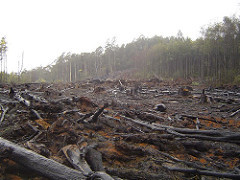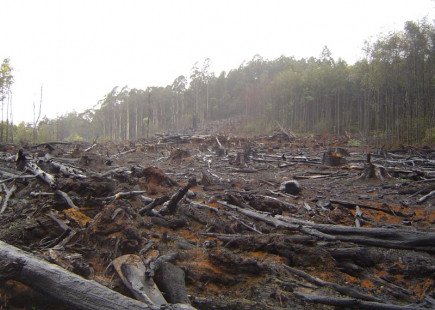Ideas into movement
Boost TNI's work
50 years. Hundreds of social struggles. Countless ideas turned into movement.
Support us as we celebrate our 50th anniversary in 2024.

The joint report produced by the United Nations Environment Programme (UNEP) and INTERPOL in 2016 paints a rather grim picture of the extent of environmental crime worldwide. It identifies it as the fourth largest criminal enterprise globally, right behind drug smuggling, counterfeiting, and human trafficking. Two questions are worth pondering here: to quote George Monbiot, how did we get into this mess and what can we do about it?


In comparison to more conventional types of crime, the recognition of environmental crime is relatively new. The first instance of criminal enforcement of environmental regulations dates back to 1899 - the Refuse Act criminalised the release of refuse into navigable waters. Yet it was not until the early 1970s that the issue of harm inflicted on natural ecosystems was revisited. This monumental shift was in part due to a newly emerging environmental sensitivity. It prompted fundamental reconsideration of our relationship with nature and human mishandling of the environment started being perceived in an unfavourable light. Popularisation of environmental law also mirrored the emergence of new risks that are an inevitable part of modern technological development. The impact of man-made rather than natural risks on both humans and the environment deserved a reflection in legal books. As a result, the phenomenon of environmental crime covered violations and flouting of environmental laws that inflict severe damage on the environment, humans, or both.
There are countless instances of environmental crime that fall into several broad categories. A report released by Environmental Investigation Agency lists 5 types of environmental crime, also recognised by the G8, Interpol, EU, UN Environment programme and the UN Interregional Crime and Justice Research Institute. These are:
Although the breadth of the scope of environmental crimes gives cause for hope, it still does not capture all types of environmentally and socially damaging practices.
What about instances of corporate colonisation of nature—genetic changes in food crops, use of plantation forestry that diminishes biodiversity, and preference for large-scale, industry-heavy, high-yield agricultural and aquaculture methods? They exemplify degradation of land and oceans that affect the wellbeing of species and their natural environments. What about so-called ‘ordinary harms’ performed by individuals including car use, excessive purchases of consumer products and meat-based diets? Such acts are trivialised and even encouraged, and although unintentionally, individuals do contribute to the crisis of climate change and increased levels of air and water pollution.
Moreover, criminalisation of environmental offences singles out particular acts, hiding their contextual backgrounds. It turns a blind eye to social, political, and economic structures that shaped conditions for environmental criminality in the first place. Audre Lorde once observed that ‘the master’s tools will never dismantle the master’s house’. The legal frameworks designed by powerful capitalist states is skewed in favour of those same states and provides no incentive to address environmental harms perpetrated by them. Economic interests will be inevitably prioritised over environmental interests.
Finally, the existing legal framework is inherently anthropocentric. Its foundation in economics and natural sciences diminishes the intrinsic value of nature and perceives it as a resource at human disposal. Such a view reinforces the division of natural environments and humanity, positioning humans outside and above nature.
Limited scope of the existing legal environmental framework, its anthropocentric leanings, and socio-political forces behind it weaken the power of environmental law and drastically limit its reach. Environmental regulation through criminalisation becomes a goal in itself, rather than a vehicle for achieving a more balanced and sustainable relationship with nature.
However, it is only one way of conceptualising environmental crime. Recent combining of law and ecology led to the emergence of Earth Jurisprudence (or Wild Law) as a counterweight to traditional understandings of legality. Current legal systems fail to recognise nature’s rights to exist and flourish. The focus needs to shift from a rigid crime/punishment dichotomy to laws that respect relationship with nature. Proponents of Earth Jurisprudence argue that the architecture of law needs to be reconstructed to legal systems that prioritise ecology and are based on an Earth-centric perspective.
Earth Jurisprudence addresses the concerns associated with the current imbalance of legal power. It expands the scope of environmental harms to include previously ignored damages. Its main principles are eco-centric: it recognises humans as an integral part of nature with a duty to protect the long-term health of natural environments and reassess the human position in them. Finally, in contrast to the capitalist economy it values the ecological above the economic.
Since legal frameworks reflect dominant social norms, principles, and values, understanding and changing the value we assign to nature is the most crucial step for restructuring our response to environmental challenges. Some examples of moving towards Earth-centric legality involve fostering the connection with nature through education. Wild Law advocates envision that appreciating the value of natural environments from an early age will foster new forms of ecological intelligence that will help to gradually transform the entire legal system.